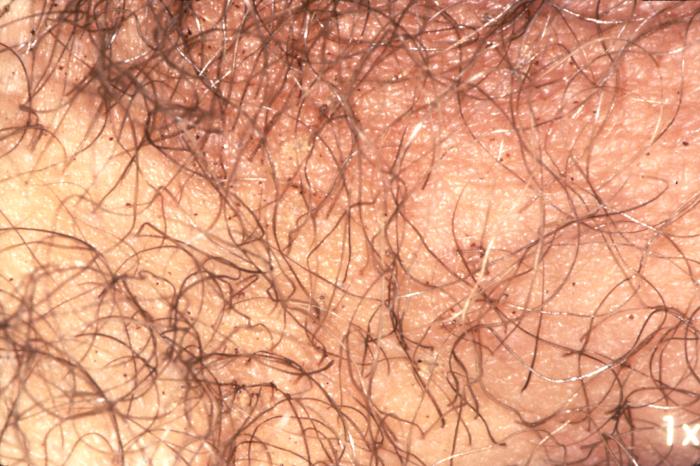
Pediculosis pubis, known as crabs or crab lice, is an infestation with the crab louse (Phthirus pubis), a millimeter-sized insect that infests the pubic hair, feeds on human blood, and multiplies rapidly.
Pediculosis pubis is an infestation of hair-bearing regions, most commonly the pubic area; but at times the hairy parts of the chest and axillae and the upper eyelashes. It is manifested clinically by mild to moderate pruritus, papular urticaria, and excoriations.
Causes of Pediculosis Pubis
Crab lice are transmitted commonly during sexual intercourse, when the louse moves from the pubic hair of its host to the pubic hair of the partner. Oral sex can lead to infestation of the eyelashes, eyebrows, face, chest hair, or scalp. They also may be acquired through contact with infested clothing or bedding. Poor hygiene is associated with the spread of crab lice.
Symptoms of Pediculosis Pubis
The primary symptom of infestation is itching in the pubic area. Scratching may spread the lice to other parts of the body; thus, every effort should be made to avoid touching the infected area, although this may be difficult.
Diagnosis
Clinical diagnosis with demonstration of lice and/or viable nits.
Treatment
Topical Insecticides The hair of the head/beard should be treated as well as pubic, axillary, and other body hair.
Pediculocides See Pediculosis.
Infestation of Eyelids 1% Permethrin or vaseline if infestation is present.
Decontamination of Environment Bedding and clothing should be decontaminated (machine-washed or machine-dried using heat cycle or dry-cleaned) or removed from body contact for at least 72 h.
Management of Sex partner(s) Sex partners within last month should be treated. Screening for other STDs may be indicated.
Prevention
Patient and sexual partners should be treated.
References
- https://www.iusti.org/regions/europe/pdf/2017/PPubis.pdf
- https://www.ncbi.nlm.nih.gov/pmc/articles/PMC2672365/